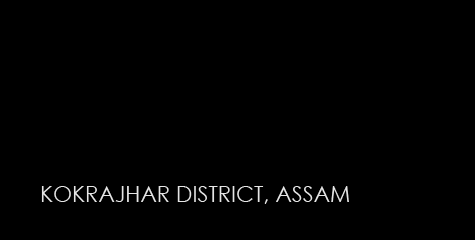A MiG-21 combat aircraft of the Indian Air Force crashed in Rajasthan's Barmer district near Uttarlai airport on Friday bu..

Last month’s violence in Kokrajhar district, Assam, which resulted in 77 dead (so far) and nearly four lakh uprooted from home, their humble hearths torched to cinders, possibly to prevent them from returning to reclaim the vacated lands, was both the consequence of the sharply changing population profile in India’s eastern States, and an attempt to perpetuate and entrench the demographic shift.
The Centre’s attempt to negate the “communal” angle by calling it an “ethnic” problem was disingenuous, if not unfair and incorrect. It hardly inspired confidence that the first to meet the Prime Minister on the issue was an all-party delegation of Muslim MPs, lobbying, of course, for the intruders.
IBTL Columns
-
"Coal allocations since 1993 are arbitrary and illegal", Says Supreme Court
-
Palestine, 6 billion people and second hand opinions
The current dispute began on July 6 when two Muslims were murdered in Kokrajhar, followed on July 20 by the killing of four Bodo activists in retaliation. Thereafter, the violence escalated leading to a predominantly Bodo exodus from their villages, and the torching of their hutments. To the surprise of their tormentors, however, the Bodos unexpectedly returned a few days later and indulged in tit-for-tat torching of rival settlements. Rattled, Chief Minister Tarun Gogoi blamed the UPA Government at the Centre for delayed deployment of forces.
In a nutshell, this seems to be the root cause of the administration’s tardiness in curbing the violence. The Bodos had been driven out of their lands, and were not expected to return soon. Quick Army deployment would keep people in the camps. The delayed deployment plus the unexpected return of the Bodos in militant mood turned the tables on aggressors and administration alike.
Bodo leader Hagrama Mohilary claims that armed Bangladeshis from across the international border incited the violence; Bodos in the refugee camps say they can no longer coexist with outsiders. As Assam tribals and Muslims both comprise formidable votebanks for the ruling Congress, there is extreme reluctance to admit the existence of a deep ethno-communal fault-line. Caught in a cleft, Congress party president Sonia Gandhi has told the people to be prepared for a longish stay in the camps.
The conflict centres on land. For over four decades, government char land, traditional grazing lands, and forest areas, have been encroached by illegal migrants in connivance with district officials at the cost of the indigenous people. Besides Bodos, other tribal communities affected by ethnic cleansing and territorial encroachments include the Karbi, Khasi, Jaintiya, Dimasa and nearly 50 others. Hagrama Mohilary says Bodoland Territorial Areas District is governed under the Sixth Schedule of the Constitution and tribal bloc rules and regulations apply. But no one is listening.
First Published | Sandhya Jain | Follow the writer on twitter.com/vijayvaani
Share Your View via Facebook
top trend
-

MiG-21 crashes in Rajasthan, pilot safe
-

Congress is responsible for rise in corruption in the country , Don't vote : Baba Ramdev
Blaming Congress for rise in corruption, Yog guru Baba Ramdev today urged public not to vote for the party in state and ge..
-

Gujarat's ultra-modern city GIFT to roll out in Gandhinagar
Work on the proposed Rs 78,000-crore nano city Gujarat International Finance Tec-City (GIFT) has now started in Gandhina..
-

Thorium Disappearing... UPA's new Coalgate?
There seems no end for the Congress-led-UPA to sanction loot of India’s invaluable natural resources. After provid..
-

Yatra culminates, NDA leaders echo national sentiment against corruption and black-money
BJP's grand old man, yet more energetic than any other politician of his era, L K Advani yesterday completed his 38 day ol..
what next
-
-
"Coal allocations since 1993 are arbitrary and illegal", Says Supreme Court
-
Palestine, 6 billion people and second hand opinions
-
Malegaon 2006 vs. Malegaon 2008 - Blast Politics
-
Who will investigate Chidambaram & Co for the Dabhol Loot?
-
Narendra Modi prepares to climb the ramparts of the Red Fort
-
The Great Jindal Swindle
-
AAP's insidious anti-Hindu agenda
-
Nagma - Sonia Gandhi's Star Soldier
-
Aam Aadmi Party : Anti-Modi stalking horse
-
What in God's name is Teesta Setalvad's agenda?
-
-
-
Time to rethink : Saffron surge and the secular debacle - Sri Sri Ravi Shankar
-
India's Wishlist for Prime Minister Narendra Modi
-
My first meeting with Narendra Modi - Sri Sri Ravi Shankar
-
Telangana - Divide and Rule?
-
Myths vs Facts about RSS
-
The Two States: Telangana and Seemandhra
-
Answering Media on Questions to Narendra Modi, but will they venture into responding these queries?
-
#AAPCon : Dilli ke log ban gaye Mamu
-
Secularism is just synonymous with Sanatan Dharm
-
Beware of the Hoax called Aam Aadmi Party
-










Comments (Leave a Reply)